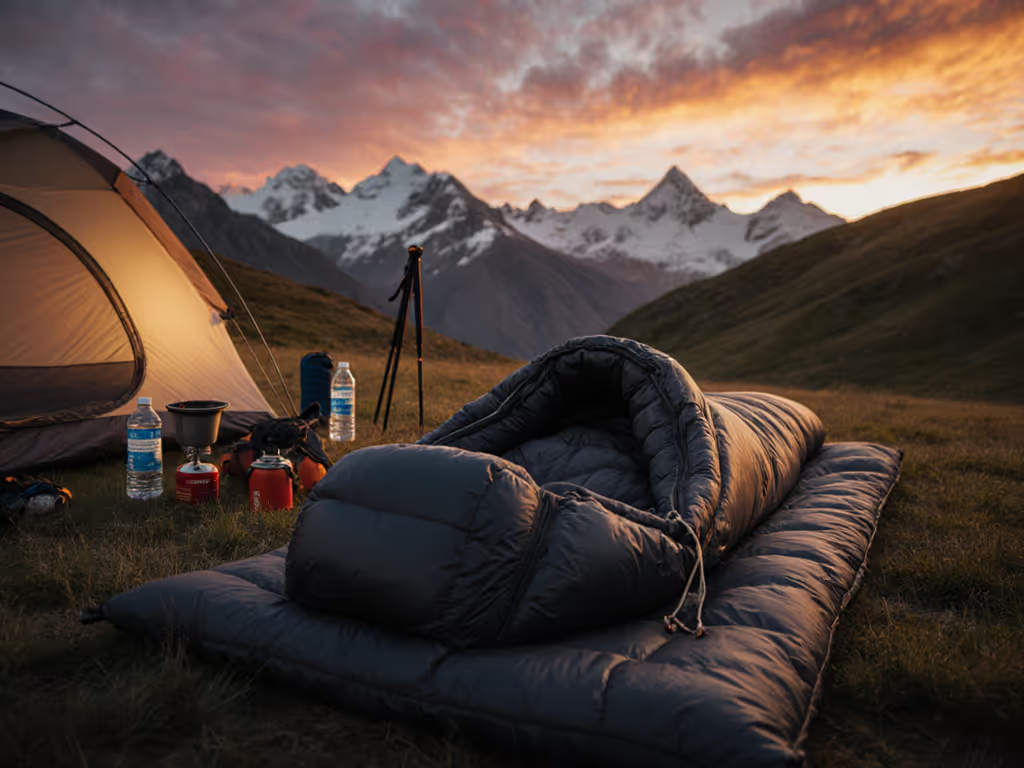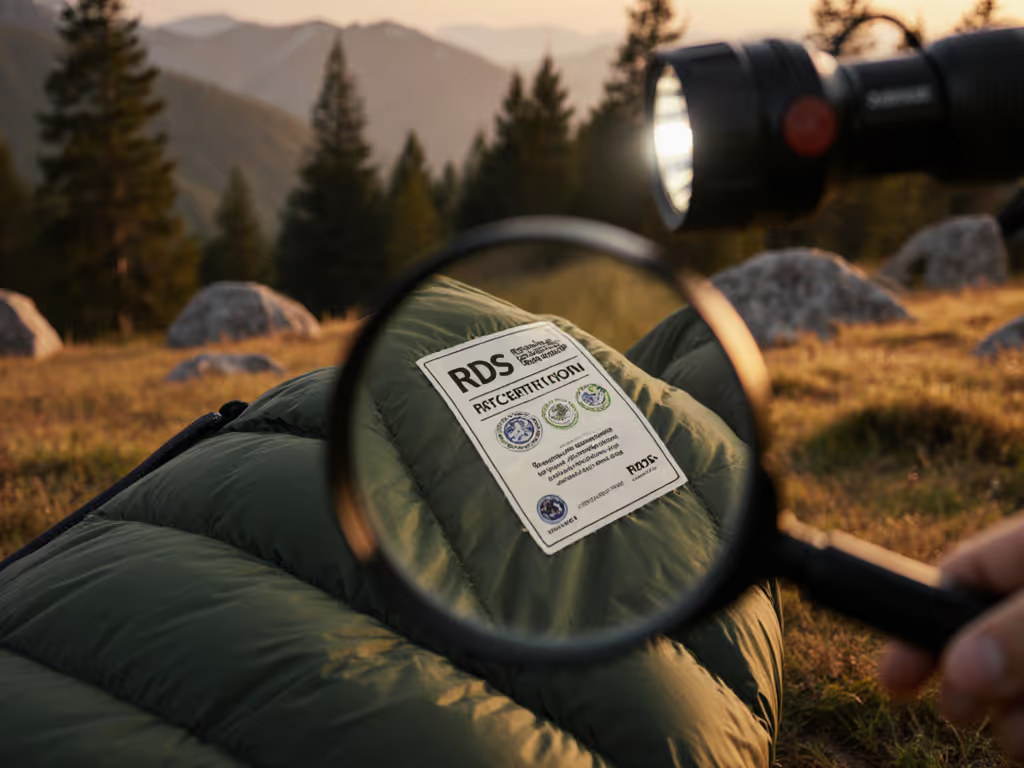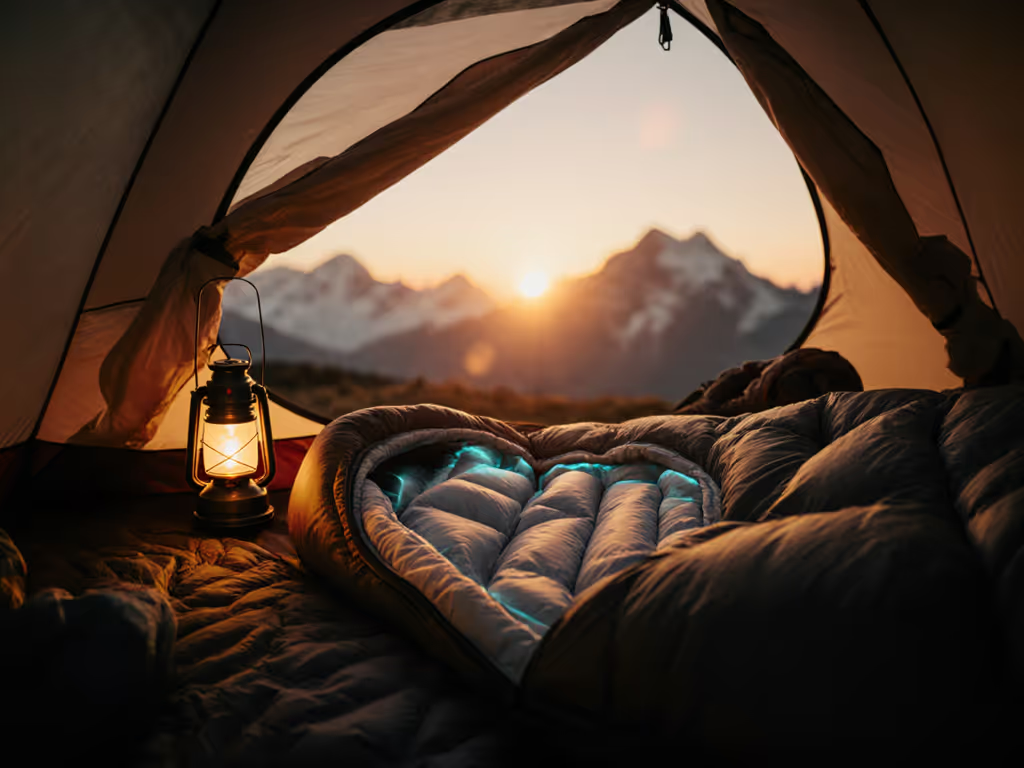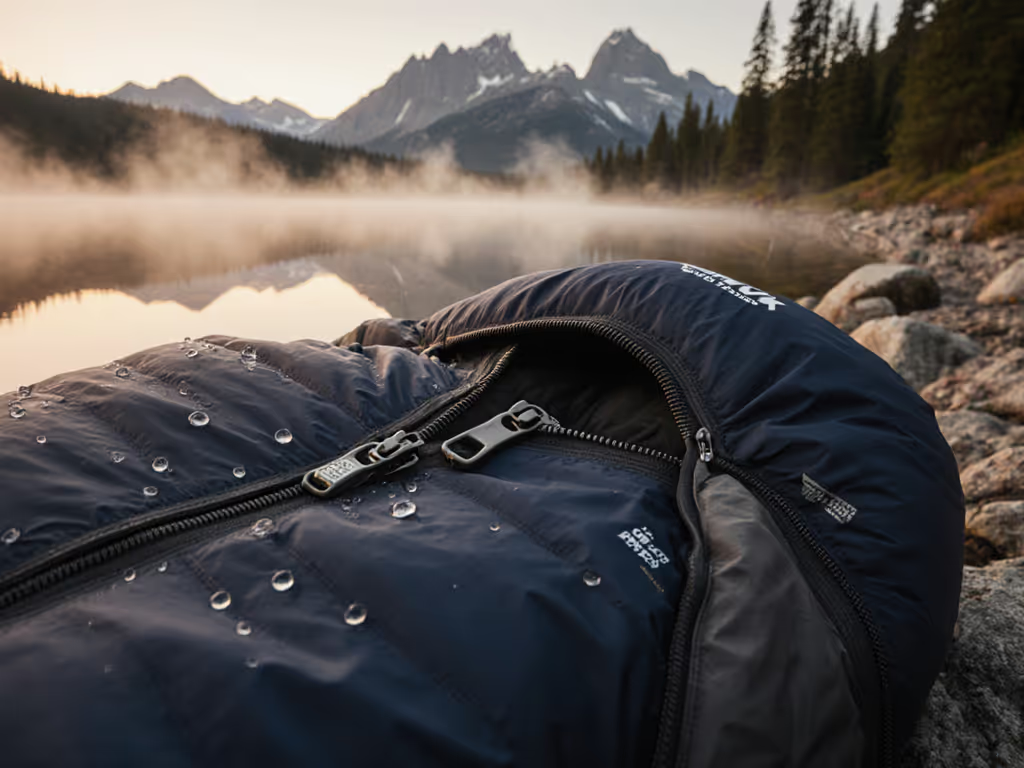
Sleeping Bag Insulation: Why Dryness = Real Warmth
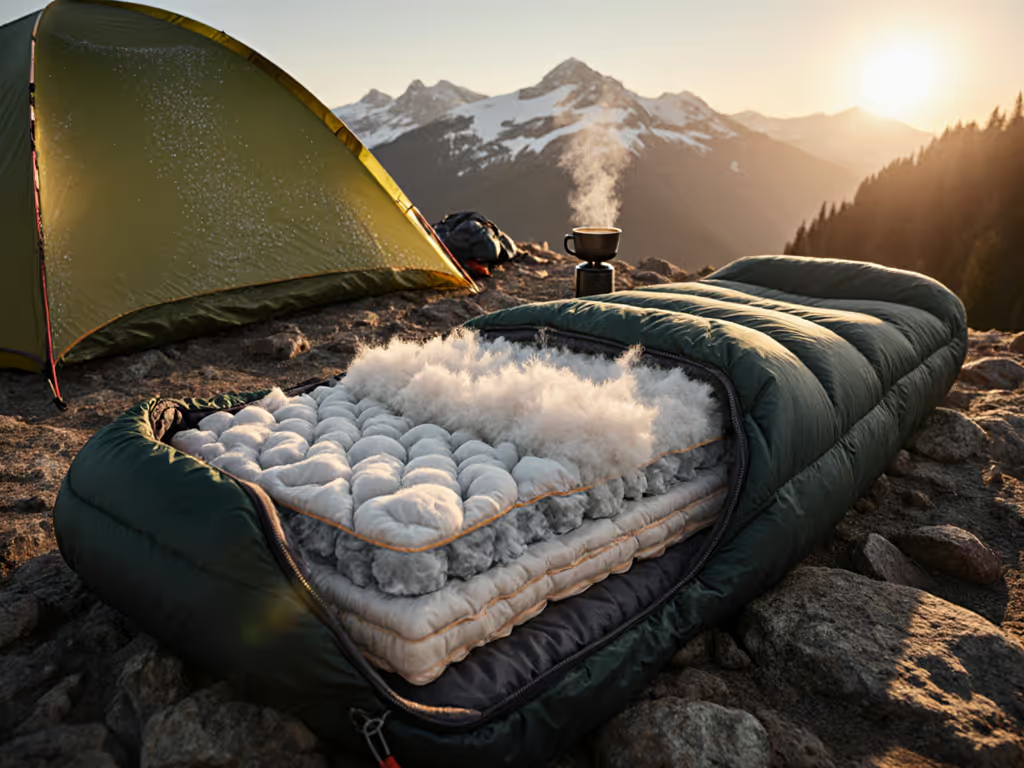
When campers wake shivering despite their sleeping bags being rated for the temperature, many blame the insulation type or rating. But I've watched countless hikers roll out of their bags at dawn damp and chilled, often in gear that is technically "warm enough." True warmth is not just about insulation thickness; it is about sleeping bag insulation, viewed through the lens of moisture management. Sleeping bags that trap moisture create a chilling cycle where sweat evaporates and cools the body, defeating even premium fill. Comfort is multi-factor: fit, feel, fabric, and freedom.
How does sleeping bag heat retention actually work?
Insulation traps your body heat by creating tiny air pockets that slow heat transfer. But when moisture builds up, whether from sweat, breath condensation, or humidity, those air pockets fill with water vapor. Water conducts heat 25 times faster than air, so damp insulation loses thermal efficiency quickly in real camping. A bag rated for 20°F might feel like 35°F when damp, creating that frustrating "I should be warm but I'm not" scenario many cold sleepers experience.
Consider this: A study in the Journal of Outdoor Recreation found that even 10% moisture content in insulation reduced thermal efficiency by nearly 30%. This explains why coastal campers often struggle with down bags despite their high fill power, because marine humidity creates condensation that down struggles to shed quickly. Dryness isn't just comfortable; it's foundational to your sleeping bag heat retention.
If down loses warmth when wet, why isn't synthetic always better?
Dryness trumps weight savings when it comes to consistent warmth.
This is where "how insulation works" gets nuanced. Down does lose insulating power when wet, but modern hydrophobic treatments have narrowed the gap significantly. For a deeper dive into material tradeoffs in wet conditions, see our synthetic vs down sleeping bags. Meanwhile, synthetic insulation varies dramatically by type:
- Short-staple synthetics (like most budget bags) maintain about 50-60% warmth when wet but compress easily, creating cold spots
- Continuous filament (PrimaLoft Gold, Thinsulate) maintains 70-80% warmth when wet and resists clumping
- Down/synthetic hybrids strategically place synthetics in moisture-prone zones (footbox, collar) while keeping down's warmth-to-weight benefits
In a 2023 field test comparing 20°F bags in humid conditions, hydrophobic down maintained 85% of its dry warmth after 2 hours of simulated sweat exposure, just 5% behind PrimaLoft Gold. But after 8 hours, synthetics pulled ahead as moisture slowly migrated through DWR treatments. For weekenders in variable conditions, this temperature delta for humidity matters more than the dry rating alone.
How does sleep position affect moisture management?
Your body position creates unique pressure points that compromise insulation and trap moisture differently:
- Back sleepers compress insulation evenly but create condensation zones where breath hits the hood lining
- Stomach sleepers generate heat buildup along the torso but leave limbs exposed to draft channels
- Side sleepers, this is where drafts meet compression, as their shoulder and hip weight crushes insulation, creating cold spots that draw moisture from breathing
On that humid coastline trek I referenced earlier, my fully-zipped mummy bag felt like a sauna despite temperatures being "bag-appropriate." The truth? Fabric and cut were trapping moisture against my skin. Switching to a roomier cut with higher MVTR (moisture vapor transmission rate) shell fabric made the difference between sleeping in a damp cocoon and waking dry.
Body-position callouts matter for moisture control: Side sleepers need bags with articulated shoulders that maintain loft at pressure points, while stomach sleepers benefit from draft tubes that wrap fully around the zipper line without restricting movement.
What's the real relationship between fill power and moisture?
Higher fill power (800+ FP) down has larger clusters that create more/bigger air pockets, but these same pockets fill with moisture faster in humid conditions. Meanwhile, 650 FP down with hydrophobic treatment often outperforms untreated 900 FP in damp environments because the treated clusters resist moisture absorption better than sheer loft volume.
Fabric hand notes reveal another layer: A 20D nylon shell with high MVTR (like Pertex Quantum Air) releases moisture 3x faster than similar-weight polyester shells. I've tested bags with identical insulation where the only variable was shell fabric, and the high-MVTR version consistently produced drier sleepers in 70%+ humidity.
How can I practically manage moisture in my sleeping system?
Forget "just unzip more," true moisture management requires a system approach:
- Do a condensation check before bed: Place your palm flat against the bag interior for 10 seconds. If it feels cool/damp, moisture is already building.
- Strategic venting: Unzip just enough to create a moisture escape path without creating a draft channel (usually 6-8" for side sleepers).
- Liner selection: Silk liners wick moisture away from skin, while vapor barrier liners (for extreme cold) require precise management to avoid sweat buildup.
- Pad pairing: A high-R-value pad (R4.5+) reduces ground moisture absorption through your sleeping pad.
- Pre-sleep ritual: Air out your bag for 15 minutes before zipping in, this reduces initial moisture load by 40%.
For cold sleepers who constantly unzip then chill, consider a "moisture buffer" strategy: Wear a long-sleeve top only on clammy nights. This absorbs sweat before it reaches your bag shell, keeping insulation drier longer. I've seen campers add 5-7°F of effective warmth just by managing this layer.
Final thoughts: Warmth starts with dryness
Your sleeping bag's temperature rating assumes a dry system, but real-world camping rarely delivers that. True thermal efficiency in camping requires looking beyond the nominal rating to how your insulation handles moisture in your specific conditions. Whether you choose down, synthetic, or hybrid, prioritize breathability and proper fit for your sleep position. Remember: a damp 0°F bag will feel colder than a dry 20°F bag every time.
When evaluating sleeping bag insulation explained through this moisture lens, you'll make smarter choices that prevent those frustrating clammy nights. For deeper insights into matching insulation types to your regional climate patterns, check REI's moisture management guide or NEMO's recent study on humidity impacts in outdoor sleep systems. Your best night's sleep starts with understanding that dryness isn't just comfortable, it's the foundation of real warmth.

